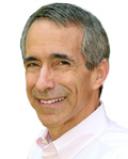
Sleep
What Is "Normal" Human Sleep?
Is what's normal "natural"? Not in human sleep. Nor should it be.
Posted June 27, 2013
Natural Versus Normal Sleep

People always ask me how much sleep they should get to live and live well. I usually respond “it depends.” The individual answers encompass genes, jobs, habits, lovers, pets, drugs and several dozen other factors—before the unknown ones.
But what’s a proper society-wide answer? How much sleep do humans need? We can’t possess that answer until we realize that “natural” sleep—what humans did in pre-industrial times, and what animals do “in the wild”˛—has little to do with today’s “normal” sleep. Information on a cell phone may be encapsulated in pixels and bytes. In humans information is made flesh. And humans quickly adjust to changing environments—as do other animals—in ways that make our “wild-type behavior” look positively wild.
What Was Natural Sleep?
Roger Ekirch, professor of history at Virginia Tech, arrived at this year’s national sleep meetings like a friendly alien. He had never used Powerpoint before. His speech was written out, declaimed more than read with full oratorical pleasure. The contrast his appearance presented between the arts and sciences was poignant, comic and sad.
Ekirch had been invited to discuss his work on the history of sleep.
An overquick précis—before widespread artificial illumination humans everywhere had a “first sleep” of three or four hours, followed by talking/working/musing for perhaps an hour or two, followed by a “second sleep” until dawn. The full changeover to the present day American model of “lie down and die”—one big uninterrupted night-time sleep—started in the nineteenth century. It only fully consolidated in the twentieth.
Add on the normal human process of napping and “natural” human sleep is a three part process with perhaps 9-10 hours a day spent slumbering.
But that’s just the human story.
Natural Animal Sleep
Next up at the conference was well-regarded sleep researcher Jerry Siegel of UCLA. His main point— animals don’t sleep in zoos or labs as they do in the wild. Not even close.
Elephants were a prime example. Caged in zoos they may snooze long at night. In the wild they sleep on average 2.6 hours total, napping at will throughout the 24 hour day. They eat more than 21 hours every day.
Does Purina know?
Siegel’s next point—lab animals don’t sleep at the same times or in the same manners as animals in the wild.
Which begs the next question—are we today “natural” sleepers—or are we now sleeping like those lab animals?
The Way We Sleep Now
Humans are born dreaming. At birth about 16 out of 24 hours is taken up with sleep. Dreaming takes up nearly two thirds of sleep.
Then we age. We sleep less.
The average American adult around 1800 slept from the late evening until after midnight. Then she got up, did housework, perhaps some cooking and mending, and went to lie down for her second sleep until dawn. Her next sleep episode was a variable nap in the early to late afternoon. Total sleep time – perhaps 9.5 hours.
Her descendent tucks in the kids—who stay up anyway—puts her cellphone next to the bed and tries to obtain maybe—perhaps—6.75 hours of sleep.
Naps? For weekends if at all.
What’s the health upshot? People who sleep less weigh more, are more tired, depressed, less productive and creative.
Human Experiments
In the early 1990’s Tom Wehr tried to reproduce pre-industrial sleep at the National Institutes of Health. Given the chance to spend lots of time in bed the post-industrial people provided pre-industrial sleep opportunities woke to mystical experiences and happy considerations of their dreams. Many said they did not want the experiment to end (highly unusual among human research, let me assure you.)
Some declared they finally knew what it was to feel fully “awake.” They felt vital, alive, rested. Some experienced a mystical union with the natural world.
And then they went back to the normal pattern of short sleep hours, coffee and commuting.
Our present day evolving version of sleep—complete with bright lights before bed and melatonin stopping cellphone texts through the middle night—is another, far vaster human experiment. How far can people veer from "natural", “wild-type” sleep and still maintain mood and health, function economically and socially?
We’ll probably discover more rather soon. Humans love testing, expanding and tearing the envelope—in sports, in work, play. We take our human design and push it as far as we can—and then some more. If recent research holds up, over time we’ll look bigger, move slower, visit doctors more frequently and feel a lot less whole, happy, and creative than we do even now.
Is anyone at Facebook listening?
Bottom Line
Natural sleep is not “normal” sleep. Pre-industrial models of sleep and rest were completely different from today.
“Normal” sleep and rest has to be defined by the specific environment in which it takes place.
These days human beings are the lab animals.
Daily we test our ability to adapt and adjust, pushing limit after limit—just as we like to do.



